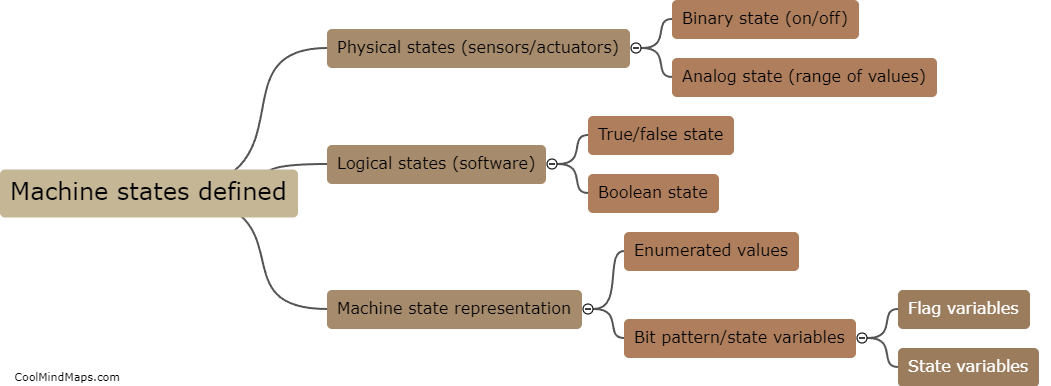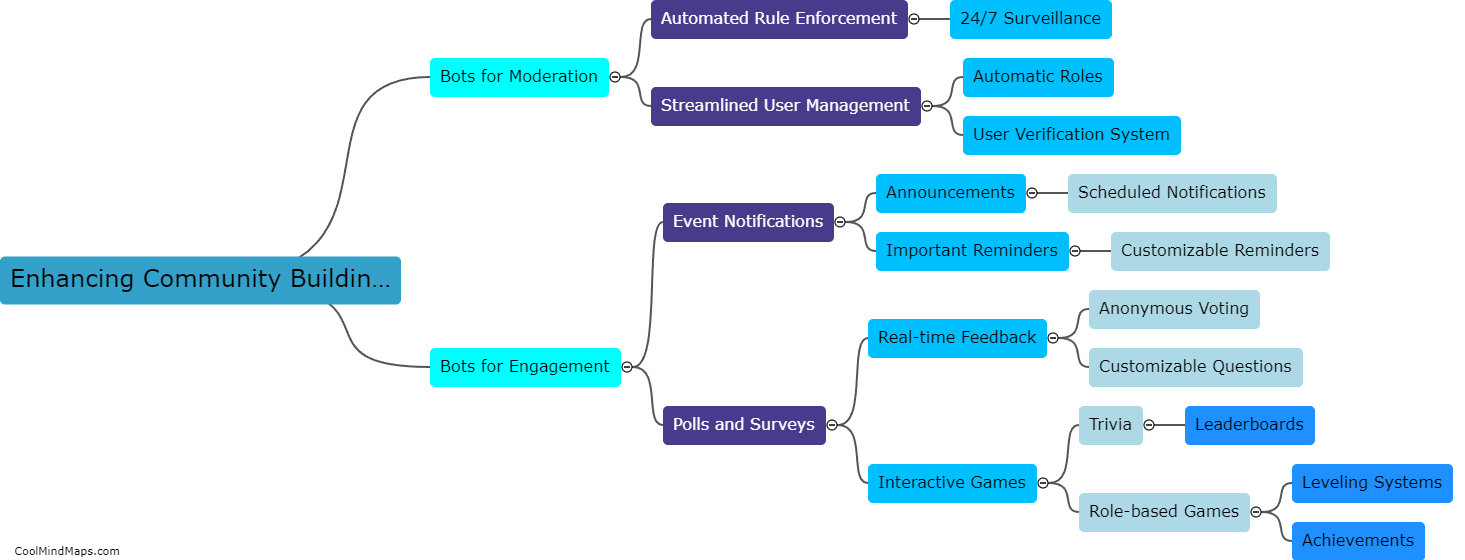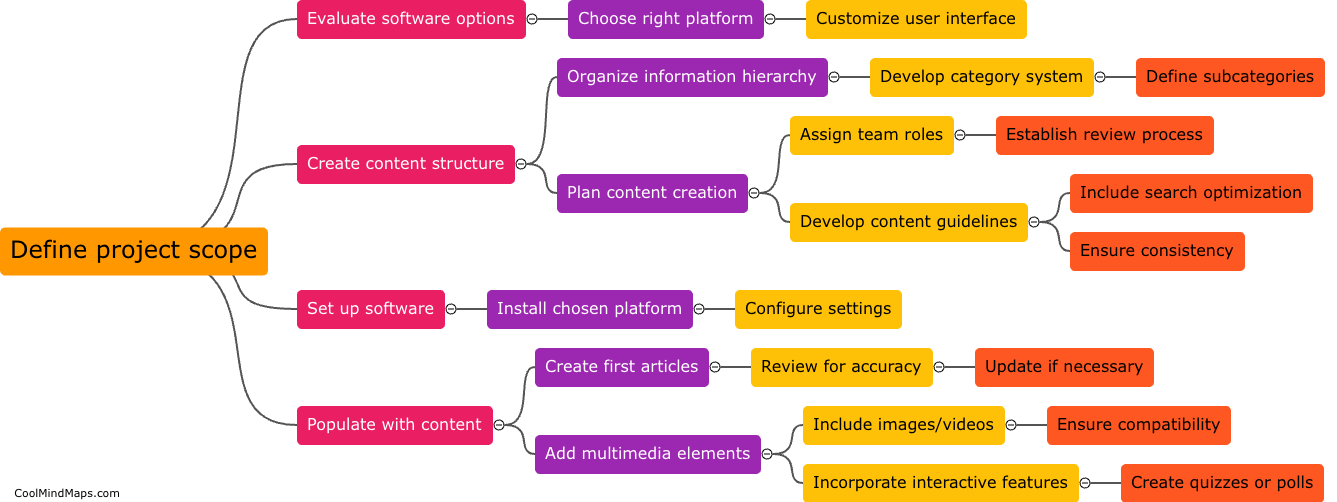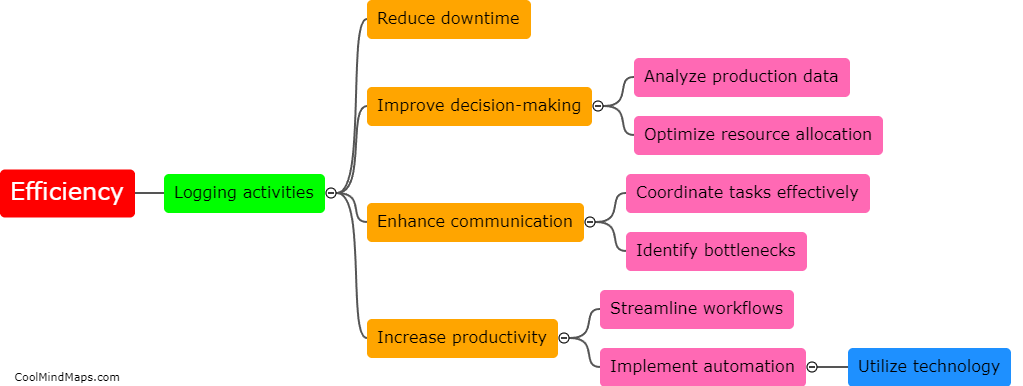How are machine states defined?
Machine states are defined as the specific conditions or configurations in which a machine or system can exist at any given moment. These states are determined by the internal components, inputs, and outputs of the machine. For example, in a computer system, machine states could include being powered on, in sleep mode, or shut down. In simple machines, such as a door, the states could be open, closed, or partially open. Machine states are often essential for controlling the behavior and functionality of a machine, and they can be represented using various techniques, such as state diagrams or state tables. The transitions between different states are usually triggered by predetermined events or inputs, which determine the machine's response and subsequent state change.

This mind map was published on 27 November 2023 and has been viewed 84 times.











